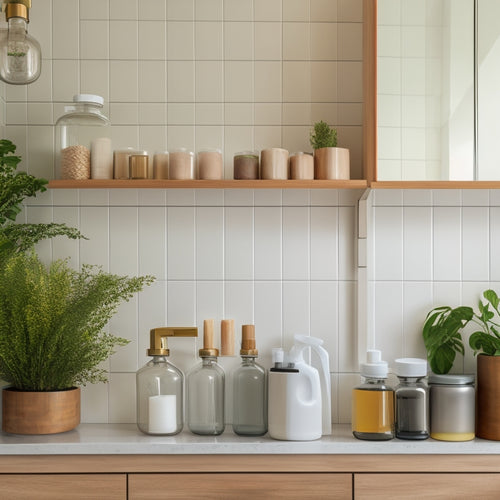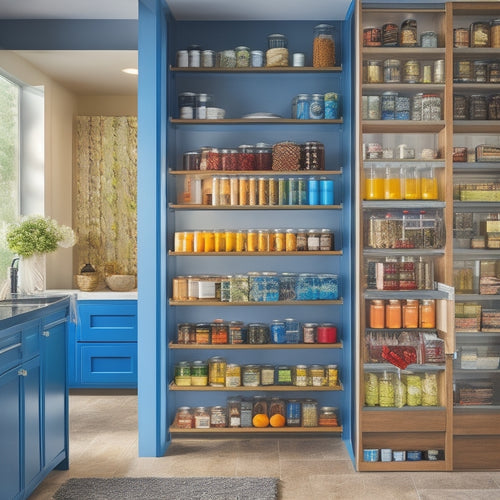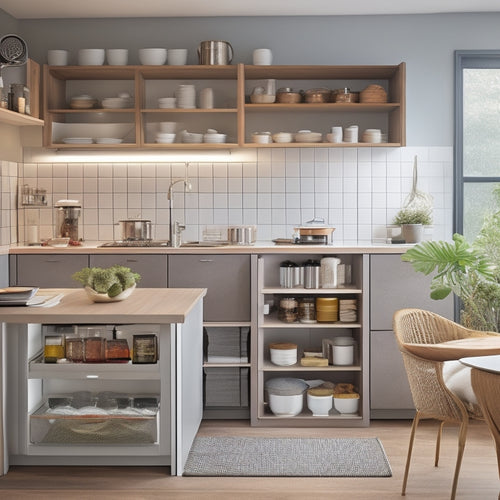
Essential Kitchen Tools for Restaurant Success
Share
A well-equipped commercial kitchen relies on a carefully curated selection of essential tools and equipment to deliver consistent, high-quality dishes and maintain a safe, efficient, and profitable operation. Key cooking equipment includes stoves, ovens, grills, and fryers, while food preparation essentials like mixers, slicers, and food processors streamline tasks. Efficient refrigeration and storage solutions, as well as important safety measures, are also crucial. Additionally, small but mighty tools like immersion blenders and microplane graters elevate productivity and precision. By understanding these essential components, restaurants can optimize their kitchen operations and utilize their full potential.
Key Takeaways
• Invest in high-quality stoves, ovens, grills, and fryers for precise temperature control and consistent cooking results.
• Equip your kitchen with essential food preparation tools like mixers, slicers, and food processors to streamline tasks and enhance culinary results.
• Implement efficient refrigeration and storage solutions to maintain ingredient quality, prevent foodborne illnesses, and maximize storage capacity.
• Ensure a safe kitchen environment by installing fire extinguishers, emergency exit plans, and slip-resistant flooring, and providing regular safety training.
• Utilize compact yet mighty tools like immersion blenders, microplane graters, and instant read thermometers to elevate productivity and precision in kitchen operations.
Essential Cooking Equipment
Four key cooking equipment types form the backbone of a well-equipped restaurant kitchen: stoves, ovens, grills, and fryers. Each plays a pivotal role in preparing dishes efficiently and safely. Gas and electric stoves offer precise temperature control and ease of cleaning.
High-quality ovens are essential for baking and roasting, and regular oven maintenance is crucial to prevent breakdowns and guarantee consistent results. Grills with adjustable temperature settings are important for achieving the perfect sear, and thorough grill cleaning after each use prevents cross-contamination and foodborne illness.
Reliable fryers with precise temperature control ensure perfectly cooked fried dishes. By investing in these key cooking equipment types and maintaining them properly, restaurants can secure a safe and efficient kitchen operation.
Food Preparation Essentials
In the domain of food preparation, three essential tools take center stage: mixers, slicers, and food processors. Each is capable of streamlining tasks and elevating culinary results. These essentials not only reduce preparation time but also guarantee consistency in texture and quality.
Developing knife skills is important to efficiently chop, dice, and mince ingredients. Maintaining equipment in pristine condition through regular maintenance is crucial to prevent breakdowns and ensure the best performance. Proper equipment maintenance also extends the lifespan of these valuable tools, resulting in significant cost savings.
Refrigeration and Storage Needs
Proper refrigeration and storage systems are the backbone of a well-run kitchen. They enable restaurants to maintain the quality and safety of their ingredients while keeping them readily accessible. These systems are vital for preventing foodborne illnesses and ensuring consistent food quality.
To achieve the best refrigeration and storage, consider the following essentials:
-
Efficient cooling solutions: Invest in high-quality refrigerators and freezers that provide consistent temperatures and sufficient storage space.
-
Cold storage essentials: Make sure you have enough shelving, racks, and containers to store ingredients in an organized and accessible manner.
-
Space-saving solutions: Choose compact and versatile storage solutions that maximize your kitchen's storage capacity while minimizing floor space.
Safety Measures for the Kitchen
Implementing comprehensive safety measures in the kitchen is crucial to prevent accidents, reduce risk, and secure a healthy work environment for staff. A well-planned safety strategy includes fire safety, emergency response, and regular training for employees. To secure a safe kitchen, consider the following essential safety measures:
| Safety Measure | Description |
|---|---|
| Fire Extinguishers | Easily accessible and routinely inspected fire extinguishers for grease, electrical, and general fires |
| Emergency Exit Plan | Clearly posted exit routes and regular drills to secure staff preparedness |
| First Aid Kit | Fully stocked and easily accessible first aid kit for minor injuries |
| Slip-Resistant Flooring | Regularly cleaned and maintained flooring to deter slips and falls |
| Regular Training | Quarterly training sessions on fire safety, emergency response, and general kitchen safety |
Small but Mighty Tools
Equipped with precision and versatility, small appliances and utensils form the backbone of a well-stocked kitchen, elevating the efficiency and quality of food preparation.
These compact essentials are often overlooked but are essential in streamlining kitchen operations.
Here are three must-have culinary gadgets for your kitchen:
-
Immersion blender: Perfect for soups, sauces, and dressings, this handheld blender is a game-changer for precise blending.
-
Microplane grater: A compact yet powerful tool for grating cheese, ginger, and citrus zest with ease.
-
Instant read thermometer: Guarantee perfectly cooked meats and poultry with this accurate and speedy temperature reader.
These small but mighty tools will elevate your kitchen's productivity and precision, allowing you to focus on creating exceptional dishes that delight your customers.
Frequently Asked Questions
How Often Should I Clean and Sanitize Kitchen Equipment to Maintain Hygiene?
To maintain hygiene, kitchen equipment should be cleaned and sanitized daily, with deep cleaning and sanitizing occurring weekly, to prevent bacterial growth and contamination, ensuring equipment care and proper hygiene maintenance.
What Are the Benefits of Energy-Efficient Kitchen Equipment for My Restaurant?
"Imagine slashing your energy bills by a staggering 50%! Energy-efficient kitchen equipment can make this a reality, yielding significant cost savings while promoting sustainability, improved performance, and reduced maintenance, ultimately safeguarding your restaurant's bottom line and the environment."
Can I Customize Kitchen Equipment to Fit My Restaurant's Specific Needs?
Restaurants can optimize kitchen efficiency by exploring customization options for equipment, such as tailored layouts, specialized features, and energy-efficient designs, to guarantee seamless workflow and enhanced equipment efficiency, ultimately prioritizing safety and productivity.
How Do I Ensure That Kitchen Equipment Is Properly Installed and Vented?
'A harmonious kitchen symphony begins with precise installation and ventilation. Guarantee a seamless setup by employing skilled technicians, following manufacturer guidelines, and implementing proper ventilation techniques to prevent hazardous fumes and maintain a safe working environment.'
What Warranties and After-Sales Support Do Kitchen Equipment Manufacturers Offer?
When purchasing kitchen equipment, manufacturers typically offer extensive warranty coverage, dedicated customer service, and technical support for equipment maintenance, ensuring seamless operation and minimizing downtime in the event of issues or repairs.
Related Posts
-

Under-Sink Storage Tips for Minimalist Kitchens
To maximize under-sink storage in your minimalist kitchen, start by utilizing vertical space with shelf risers and st...
-

Sliding Pantry Organizers With Tiered Racks
Sliding pantry organizers with tiered racks optimize your pantry space and enhance accessibility. These organizers cr...
-

Space-Saving Kitchen Solutions for Busy Homeowners
To maximize your kitchen's potential, start with vertical storage solutions like wall-mounted shelves and pegboards f...


